-
News & Trends -
Sales -
Marketing Related Topics -
B2B Software Guides Related Topics -
Free Tools & Resources -
- About Us About Us


Pipedrive is an easy-to-use, sales-centric CRM with robust pipeline management. Its graphical UI and low monthly costs will suit small businesses seeking an accessible and affordable CRM. However, companies looking for a 3-in-1 platform with sales, marketing and service features may need to consider something else. Our Pipedrive review will help you decide if it’s right for your team, and offer alternatives if you want a CRM with sales, marketing, and service tools.


Pipedrive provides a no-frills approach to deal and contact management. Small businesses and newbies to CRM software will appreciate the visual interface and basic sales tools, but enterprises might need more advanced functions.
Pipedrive may be rated as an above-average CRM, but it’s important to think beyond generalities, including situations where sales leaders should consider adopting the CRM and some instances where it may not be as useful. Continue reading to learn more about Pipedrive’s use cases, pricing, key features, usability, and customer support, including what people think of Pipedrive and its alternatives. For a breakdown of our scoring logic, see our evaluation below.
Pipedrive is a straightforward CRM that’s easy to implement and use so reps don’t have to divert too much time away from fostering client relationships and generating revenue. Companies seeking a reliable core of sales tools with an emphasis on pipeline management will find it in Pipedrive, along with around-the-clock access to user support should things go awry at any time. It’s also appealing to businesses on a tight budget thanks to its low monthly costs.
Click below for a complete list of the reasons to consider Pipedrive:
If you’re interested in learning more about what this CRM can do, check out Pipedrive’s full list of plans for information on pricing and features — which you can cross-reference against your sales goals and budget. You can also test drive the software risk-free for 14 days.
The simplicity and ease of Pipedrive make it an excellent option for most small-to-medium businesses looking for something they can use almost immediately. However, enterprises will be left wanting due to Pipedrive’s basic reporting, low-level customization, and absence of advanced features such as AI-powered automation. Pipedrive is also not an ideal choice for cross-department collaboration with marketing teams, as it’s strictly a sales-focused CRM.
Here are the scenarios where Pipedrive might not be the right fit:
Should Pipedrive not meet your criteria, check out our list of the best CRM software, which offers a detailed breakdown of the top CRM platforms according to use case and budget. You can also jump down to our list of the best Pipedrive alternatives.
Pipedrive has five subscription tiers. The entry-level Essential plan costs $14.90 per user, per month for basic lead and deal management, limited customization, and all-hours access to live chat support. Upper-level plans add workflow rules, a built-in phone system, and security alerts. Every Pipedrive subscription comes with a 14-day risk-free trial and no seat limits. Here’s a breakdown of Pipedrive’s pricing structure:
| Essential | Advanced | Professional | Power | Enterprise | |
|---|---|---|---|---|---|
| Annual Plan Monthly Rate | $14 per user, per month | $29 per user, per month | $49 per user, per month | $64 per user, per month | $99 per user, per month |
| Monthly Plan Monthly Rate | $24 per user, per month | $39 per user, per month | $64 per user, per month | $79 per user, per month | $129 per user, per month |
| Free Trial | 14 days | 14 days | 14 days | 14 days | 14 days |
| Key Features | Lead & deal management, customizable pipelines, 24/7 live chat support | Workflow builder, email sync & tracking, meeting scheduler | In-app dialer, free Smart Docs add-on, unlimited visual dashboards | Phone support, free Projects add-on, custom onboarding | No feature limits or restrictions, security alerts & rules, free add-ons |
| Custom Fields | Up to 30 | Up to 100 | Up to 300 | Up to 500 | Unlimited |
| Reports | Up to 15 per user | Up to 30 per user | Up to 150 per user | Up to 250 per user | Unlimited |
| Workflow Rules | N/A | Up to 30 | Up to 60 | Up to 90 | Up to 180 |
Users can enrich their Pipedrive plan with a handful of add-ons. These extras cost between $6.70 and $49 per company, per month depending on whether you opt for annual billing or a month-to-month plan. Pipedrive add-ons fortify the platform with lead management tools plus advanced document management for its lower-tier plans.
Pipedrive’s main purpose is to streamline the sales process through an uncluttered interface, with an emphasis on pipeline management. Of course, it also offers tools for contact management, basic sales automation, and activity tracking, to name a few. Head below for a list of the standout core CRM features found in Pipedrive.
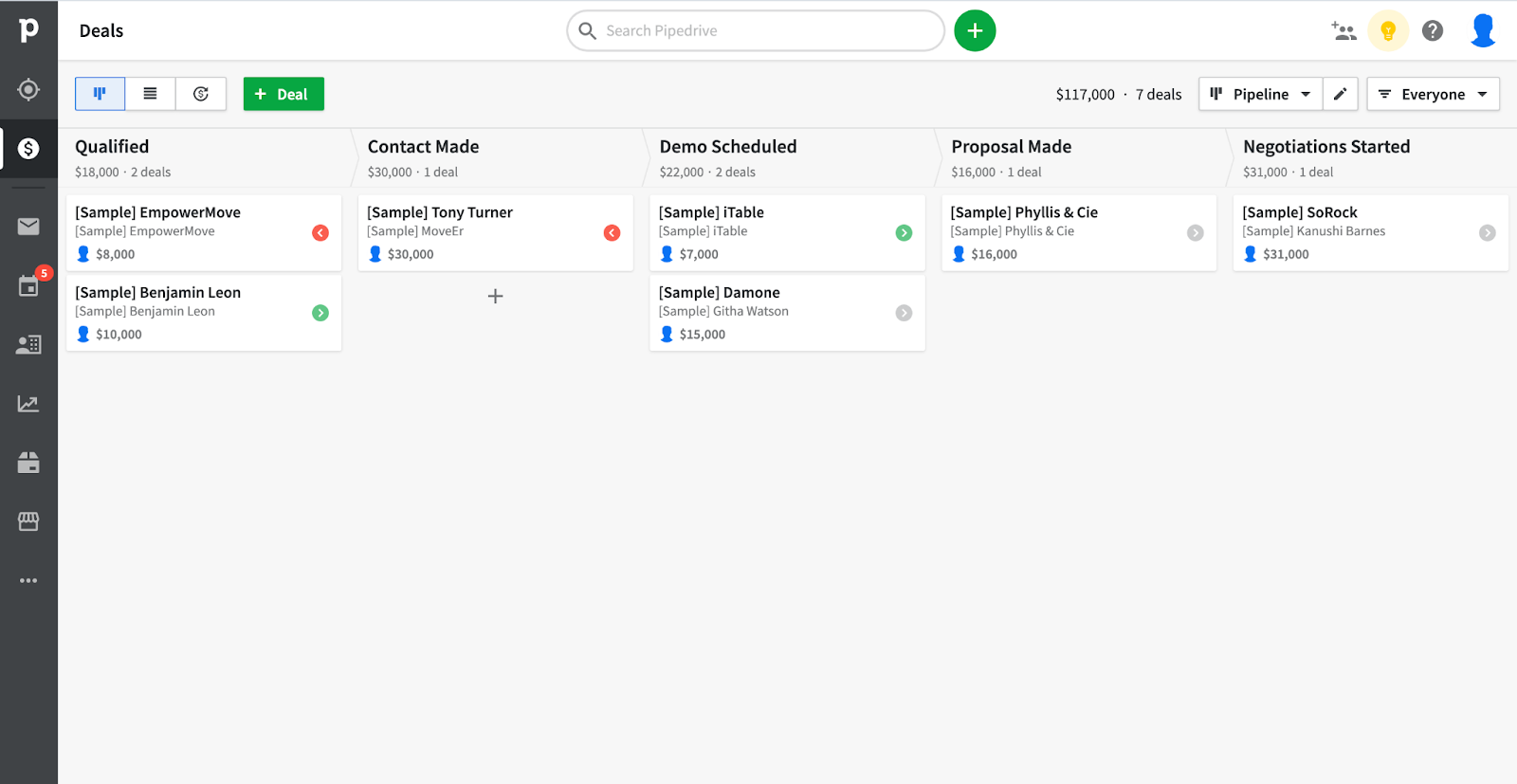
All plans include unlimited kanban-style pipelines created by dragging and dropping the client or lead data you need throughout the appropriate stages. These sales pipelines are highly visual and easy to follow so teams can track deals from start to finish. Users can customize stages to fit their unique sales cycles, filter results according to reps or stage, and draw attention to key points using color-coded tabs.
Our independent editorial review of the best pipeline management software places Pipedrive among the top options.
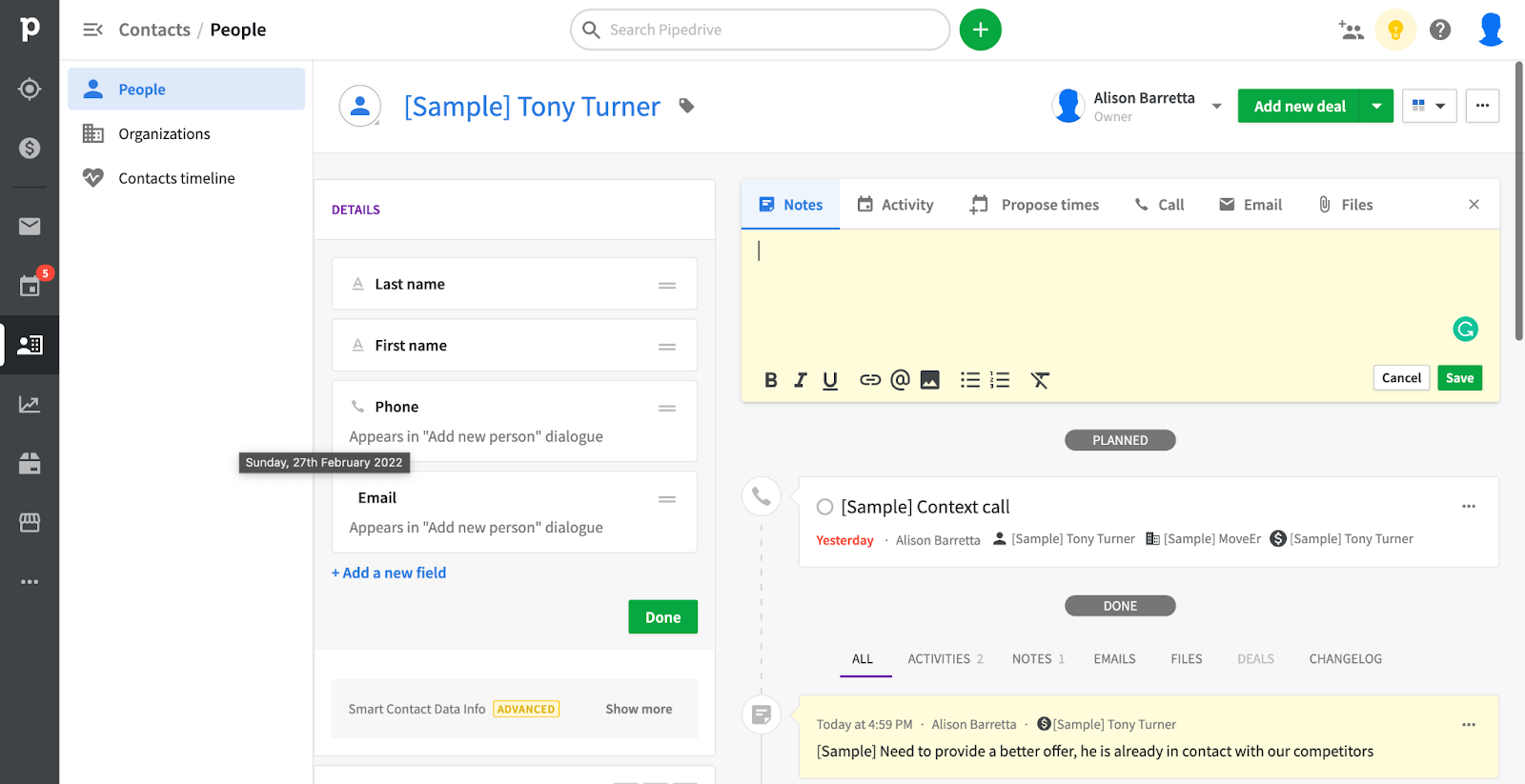
Unlimited contact records are standard with every Pipedrive subscription. Basic contact management features enable you to group contacts by people or companies, then track all activity and correspondence. For a streamlined approach to data entry there’s smart contact data — available with Pipedrive Advanced and up — which enriches contact profiles with info from LinkedIn and other social media platforms.
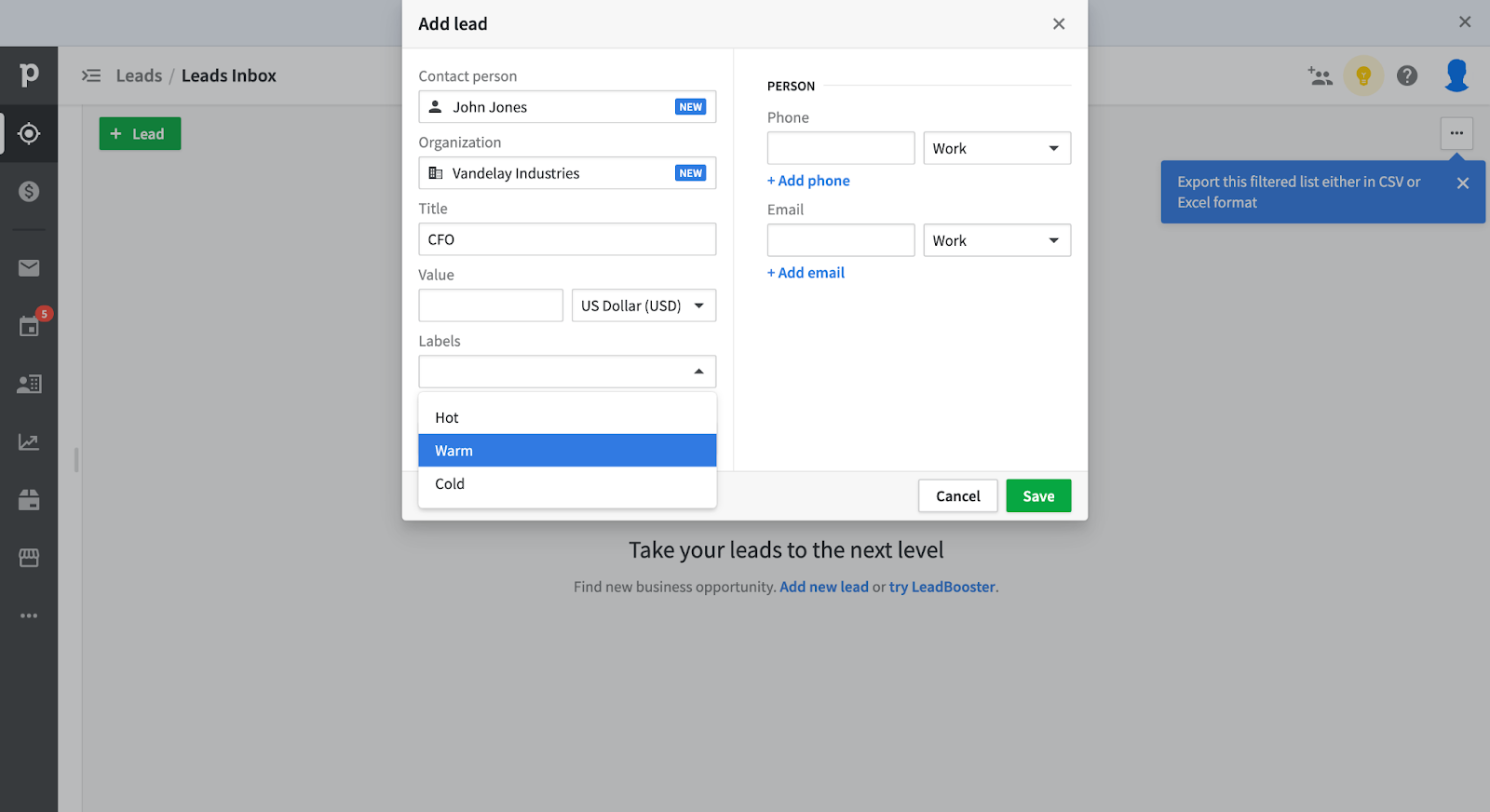
Pipedrive’s lead management is closely linked to its pipeline. Add lead information manually or through information scraped from web forms and chat widgets. From there, Pipedrive will pool leads into a leads inbox until you’re ready to qualify them. Once leads are qualified, they can be converted into a deal and sent right to the pipeline. The LeadBooster add-on (from $32.50 per month) introduces lead prospecting and lead nurturing tools to the base CRM.
See where Pipedrive lands on our list of the best lead management software for qualifying, tracking, and nurturing leads.
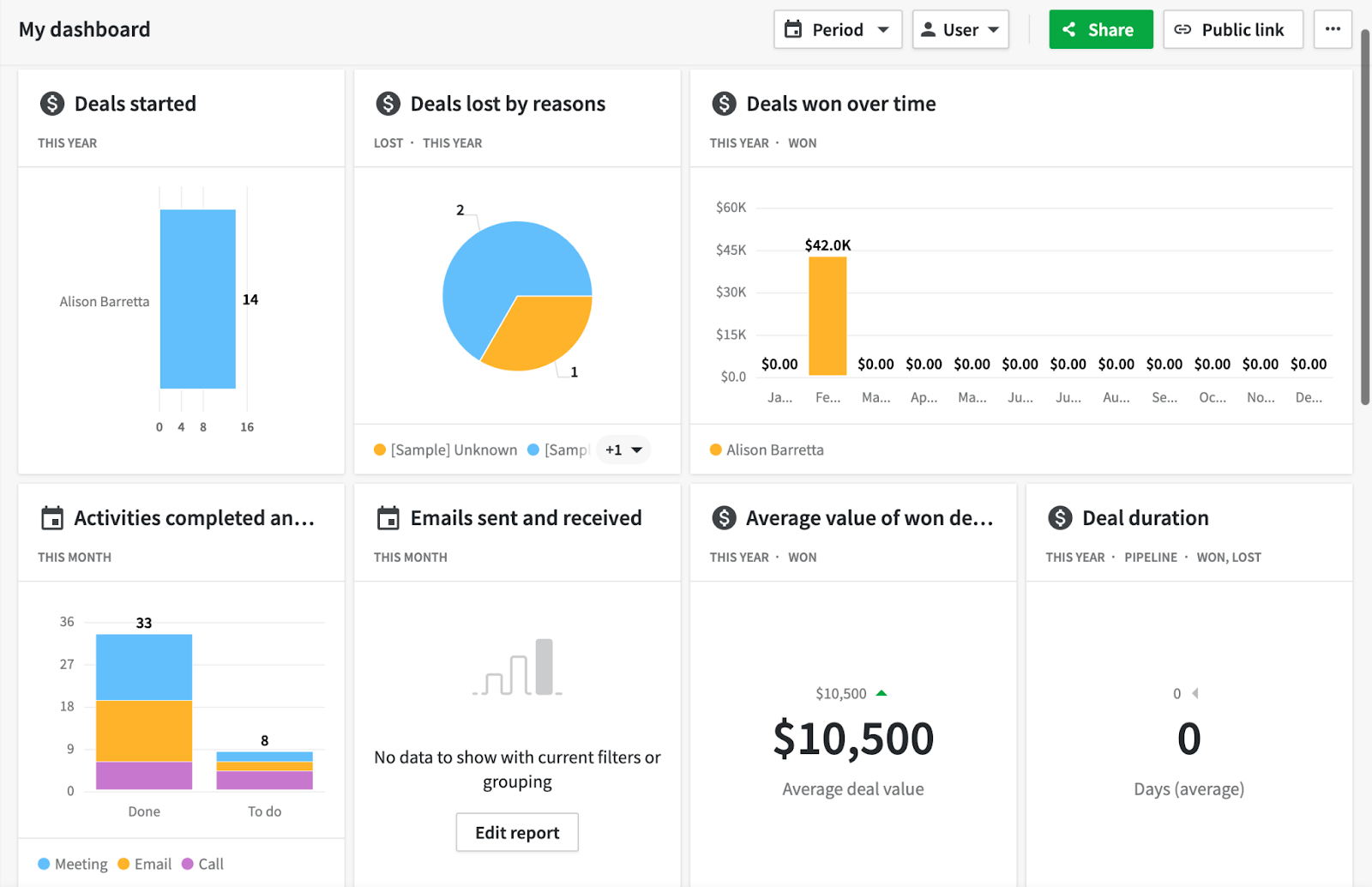
Pipedrive’s reporting module may be too limited for data-driven organizations, but for small businesses just needing to track CRM metrics regarding deal performance, activities, and email opens, it offers plenty. All plans come with a dozen report templates, and its two highest tiers include a custom report builder. All reports can be added to its eye-catching visual dashboards, which displays up to 25 reports at once.
Learn how CRM reporting and CRM dashboards can work together to provide your business with actionable insights — whether you use Pipedrive or another CRM.
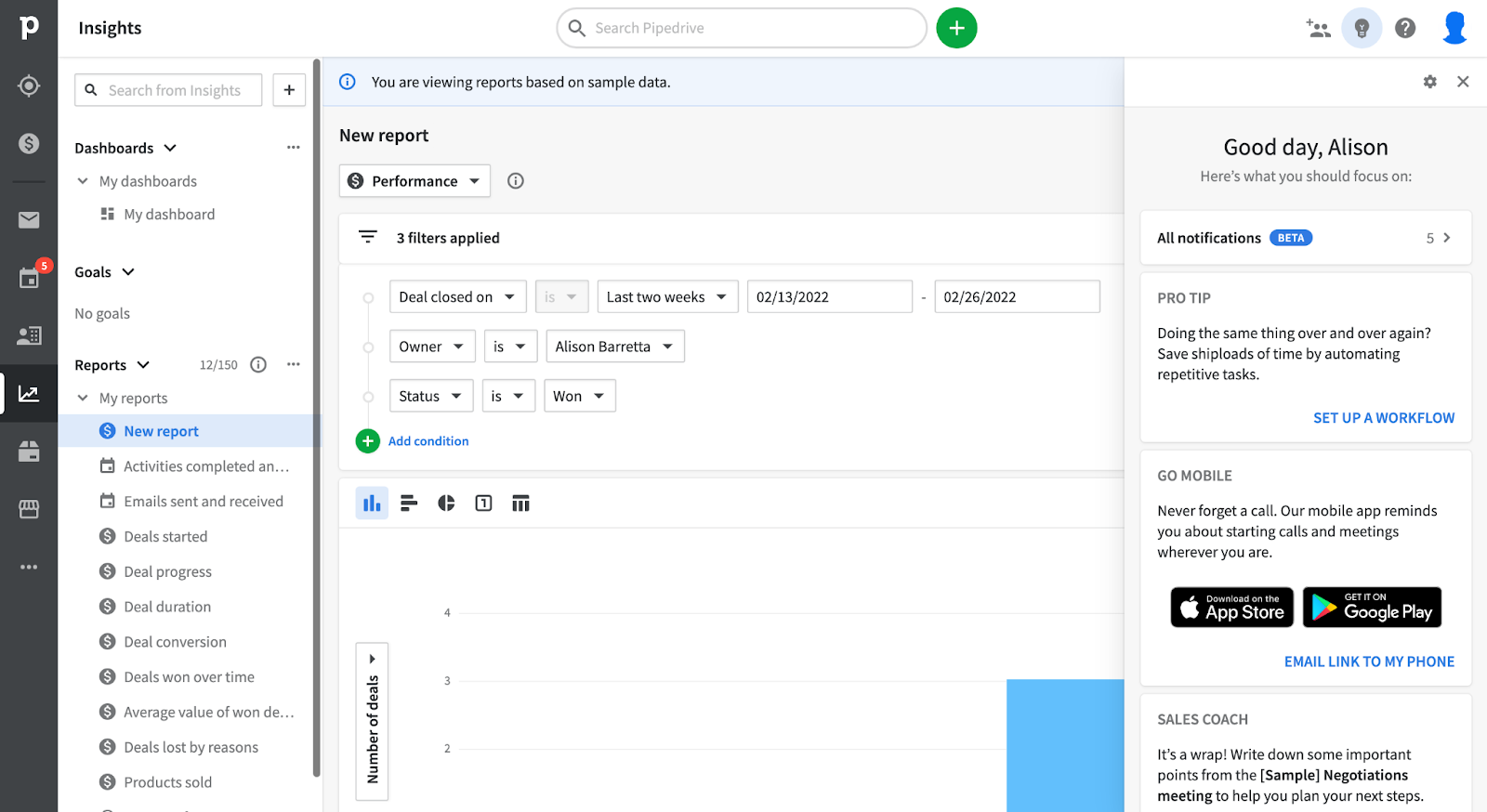
A modest AI-powered Sales Assistant comes with every plan. Its primary function is to analyze past sales activity and offer feedback on how reps can improve their performance — along with which CRM or third-party tools they can use to achieve that. Pipedrive’s Sales Assistant also produces weekly progress reports to show reps how close they are to reaching their personal and team sales goals.
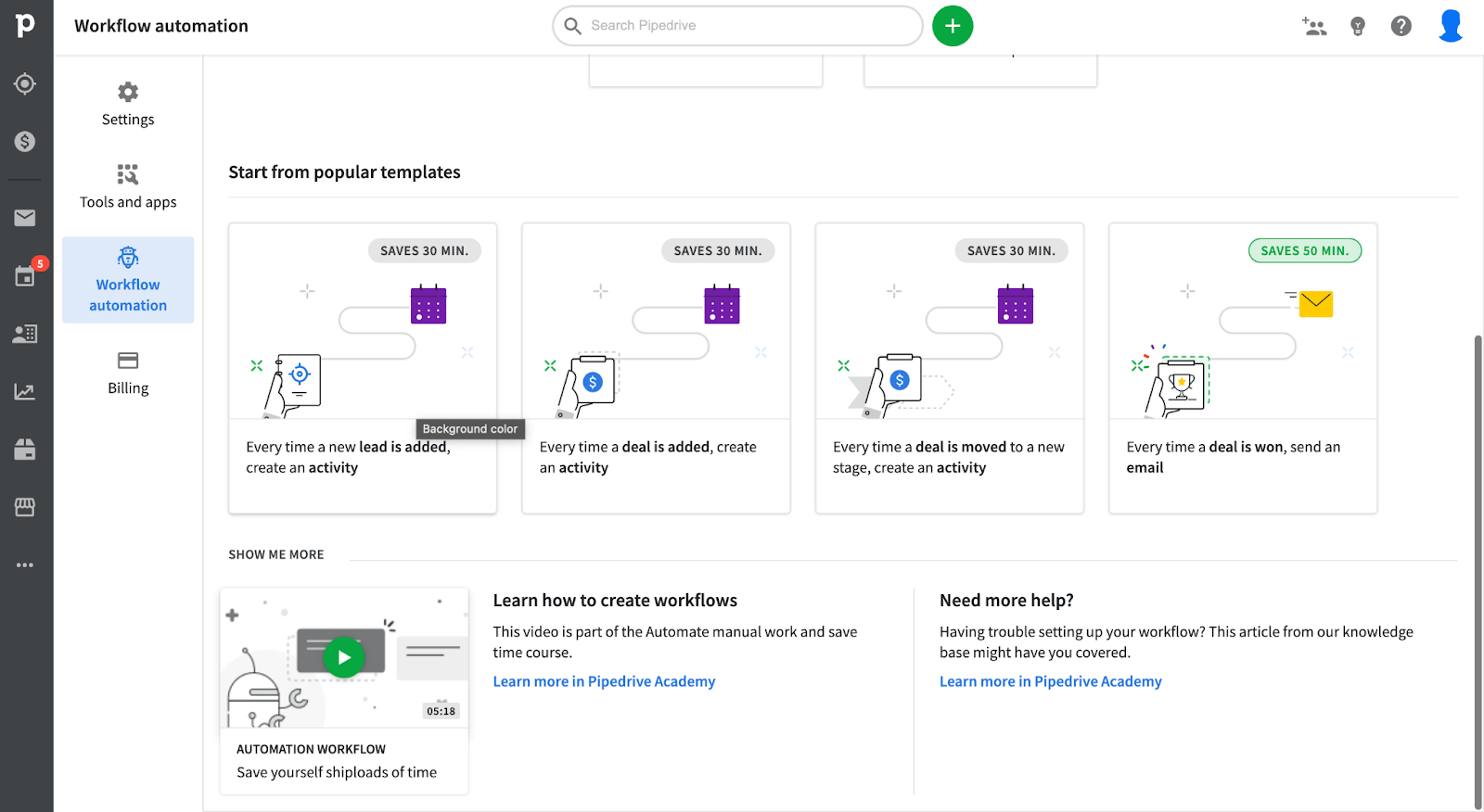
All Pipedrive plans (except Essential) have a basic workflow builder. You’ll be able to automate tasks related to deal stage progression and message sends through a simple visual point-and-click interface. Workflows can either be made from scratch or through any of Pipedrive’s customizable templates. You can even create your own workflow recipes to share with other Pipedrive users.
Workflows are a fantastic way to optimize your sales process; find out how to set up your own automated tasks in our complete guide to CRM automation.
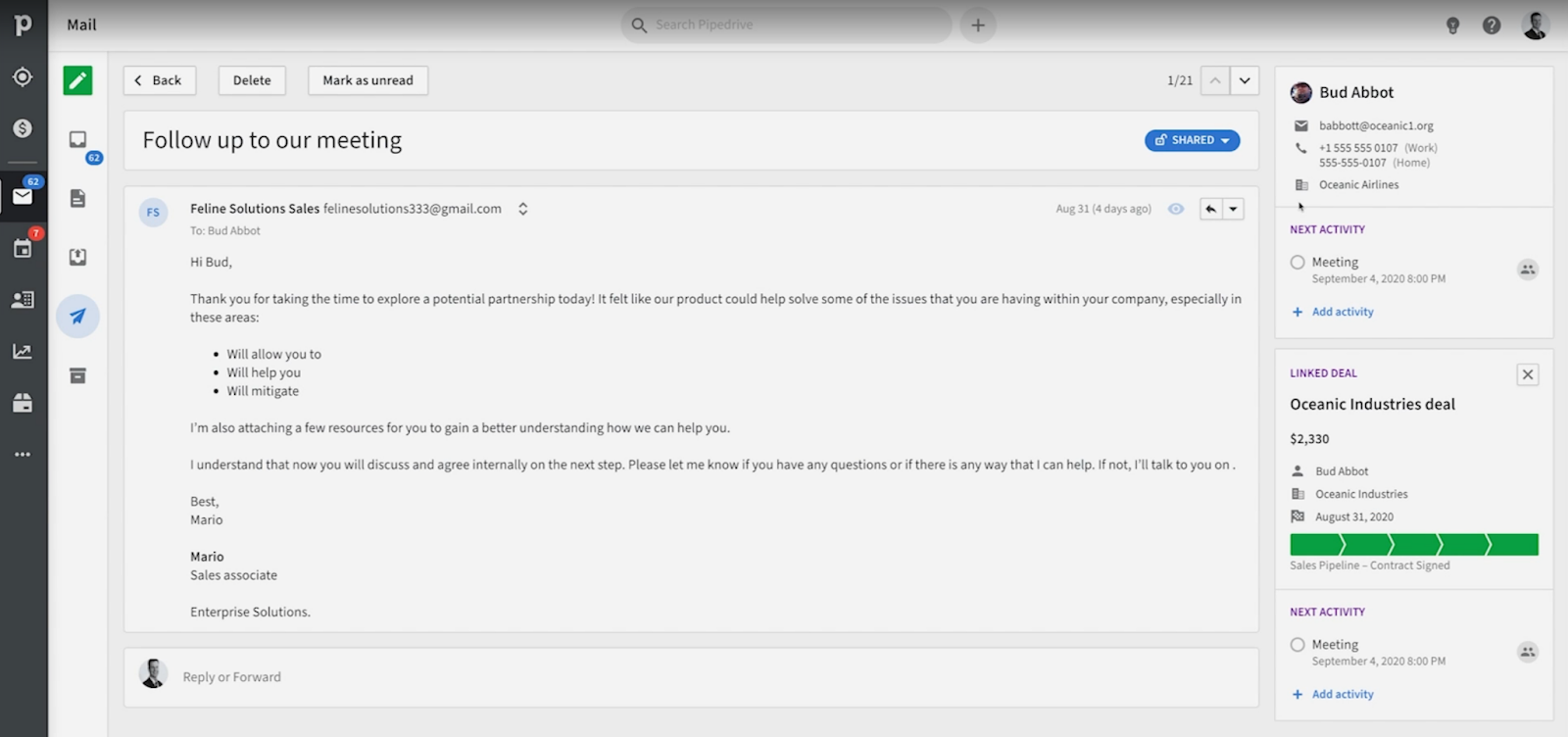
Pipedrive’s integrated inbox (included with Pipedrive Advanced and up) syncs with all major email clients, including Gmail and Outlook. This allows you to send and receive messages right in the CRM, track email opens and clicks, and create custom signatures. To send bulk emails more quickly, use the customizable templates and pre-populated merge fields for a personal yet timely touch.
Check out our list of the best email marketing software, which places Pipedrive as a top CRM option for salespeople.
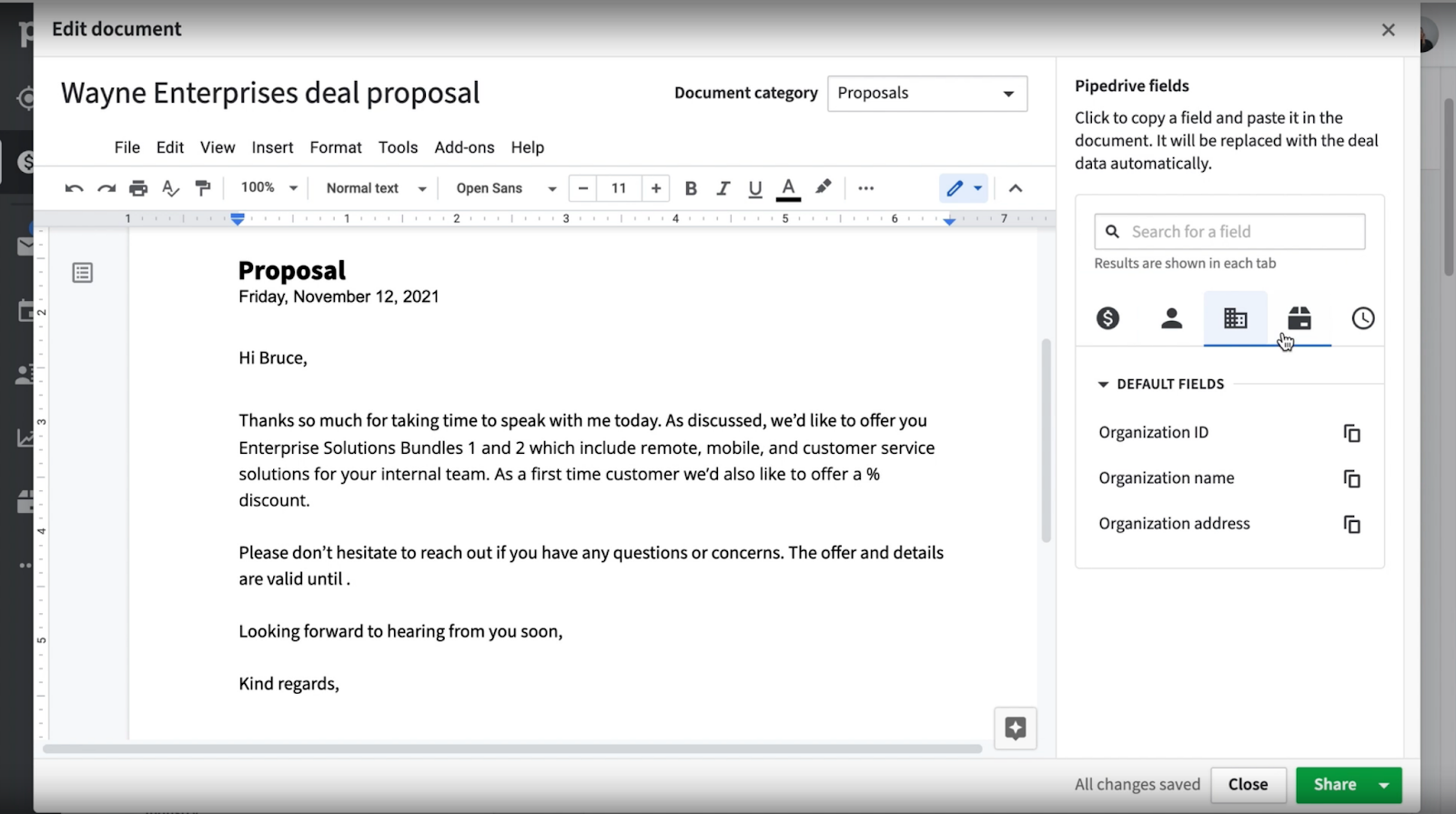
Subscribers to Pipedrive Professional and Enterprise have access to Smart Docs — which is also available as an optional add-on with Pipedrive’s lower plans. It enables Pipedrive to integrate with Google Drive or Microsoft OneDrive for sending and tracking quotes, proposals, and invoices. Other features include esignatures, autofill documents, and collaborative editing.
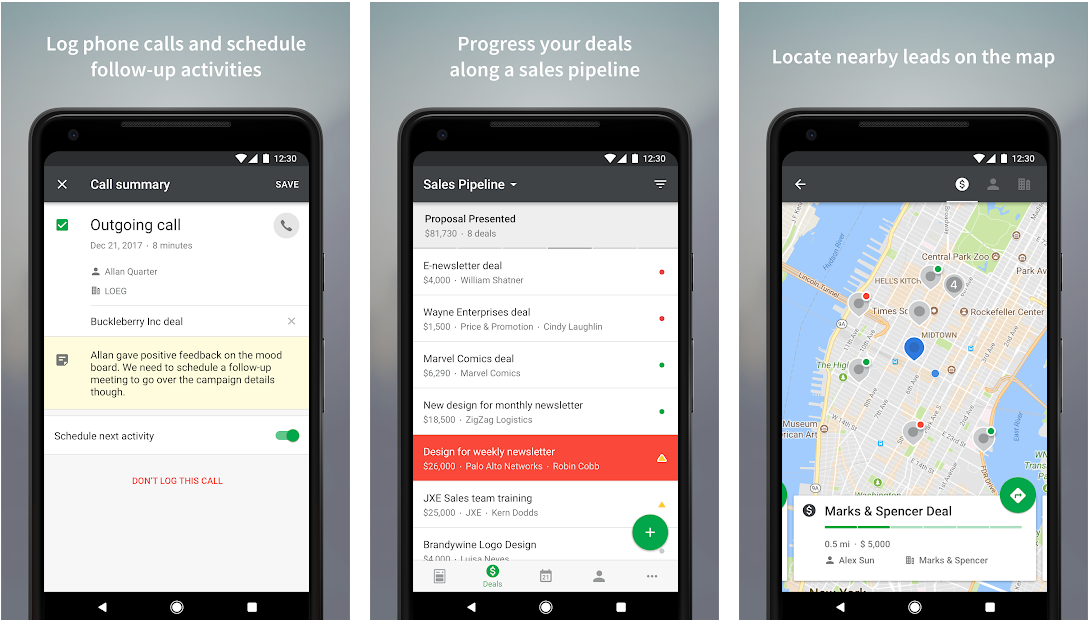
Pipedrive has a free mobile app for iOS and Android. Like its desktop counterpart, Pipedrive Mobile has an organized visual UI, but its app-exclusive features make it worth downloading. Notably, it offers offline access for contact and sales data so field reps can get the information they need even without a decent Wi-Fi connection. The Pipedrive mobile app also logs calls, schedules follow-ups, and integrates with Google Maps and other popular third-party apps.
If you’re looking for a CRM to take on the road, our list of the best mobile CRM apps features Pipedrive plus other options to consider keeping in your pocket.
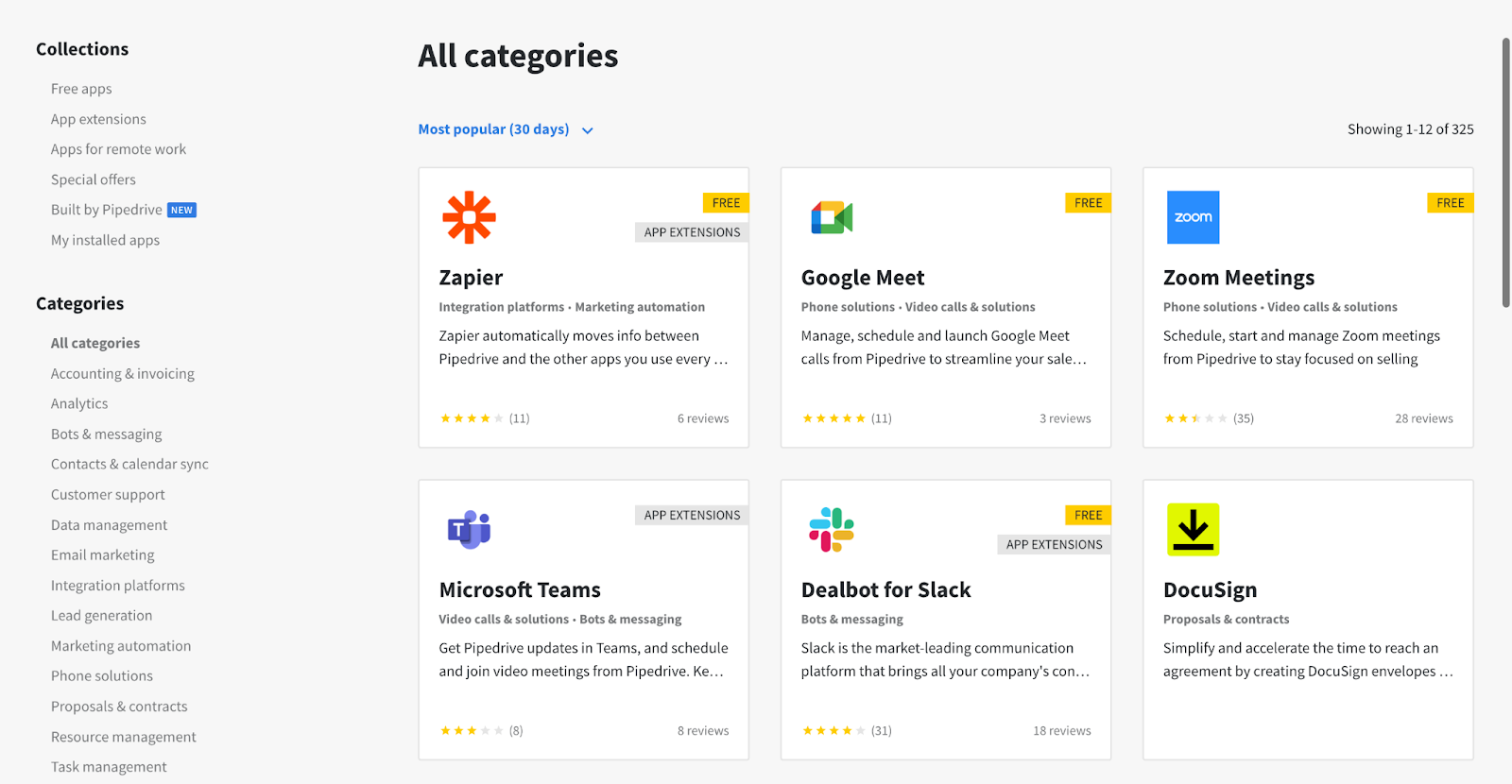
The Pipedrive base platform may be somewhat lean beyond key sales functions — which is where its vast library of integrations comes into play. The Pipedrive Marketplace hosts over 300 apps spanning lead generation, email marketing, productivity, and much more. Notable integrations include Slack, Zoom, Trello, and even HubSpot CRM. Beyond native apps from Pipedrive Marketplace, you can also add integrations via Zapier or develop your own.
Your ideal CRM can be made even better when you add the right CRM integrations — check out our comprehensive guide to see how to install these external apps.
Pipedrive was developed by a group of former sales professionals who wanted a CRM that catered to the exact needs of the individuals who go out and sell every day. That mission has culminated in one of the most intuitive CRMs ever made, boasting a tidy UI that’s simple to navigate and access. Pipedrive is especially renowned for its visual kanban-style pipelines, which can be customized via drag-and-drop.
Since Pipedrive is a CRM made with busy salespeople in mind, implementation is a fairly swift process. Most people should be able to pick up the software without much formal training; however, Pipedrive does have a few channels anyone can turn to if they encounter an issue or need some guidance — an extensive knowledge base, an active user community, and the Pipedrive Academy, which includes courses and tutorials on various aspects of the CRM.
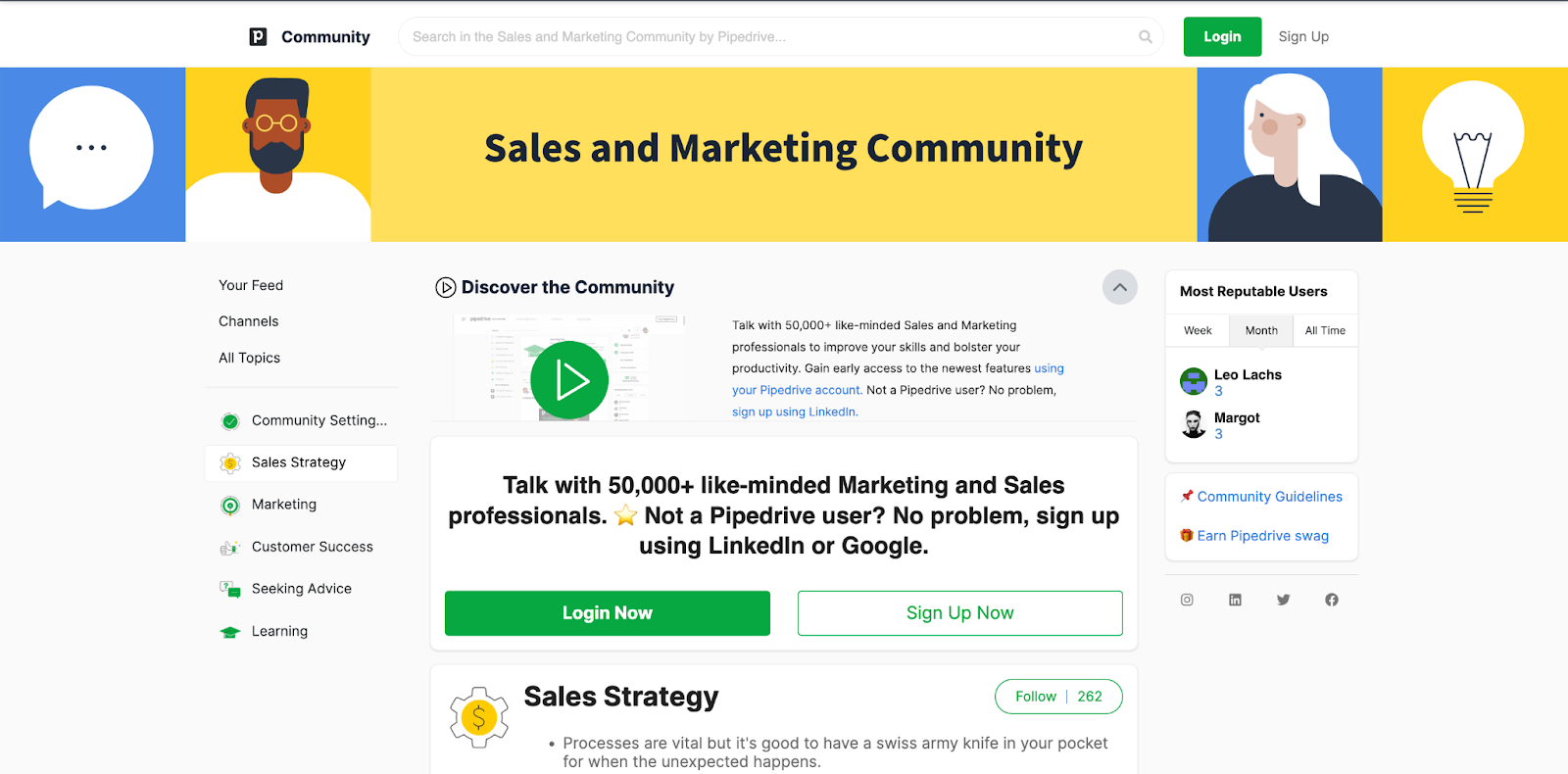
All Pipedrive plans include 24/7 access to live chat and email support. Enterprise and Power subscribers with account setting access are also eligible for phone support and optional custom onboarding. If you’d like to know more about the onboarding process, you can also visit the Pipedrive community to interact with other members. Overall, the CRM has a mixed reputation, but note that your mileage may vary depending on why you’re requesting help.
For technical matters, many users claim that Pipedrive staff are generally quick to reply to queries and offer comprehensive assistance across all support channels. However, when it comes to billing issues, several people have said that the quality of service they received was insufficient. Thus, it may help to do your due diligence by carefully reading the terms and conditions of your Pipedrive subscription and staying on top of any proposed billing changes.
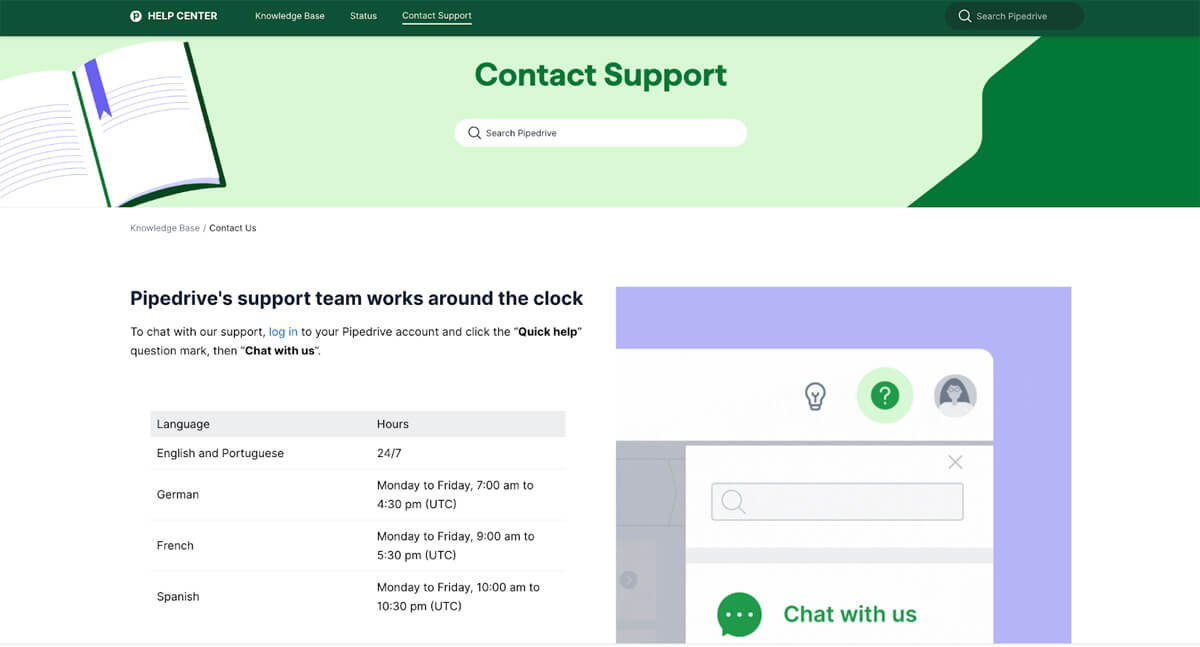
What is the consensus on Pipedrive? We’ve browsed three of the top software review sites (Capterra, TrustRadius, G2) for ratings and comments to provide a more complete take on what users think of this popular sales-centric CRM.
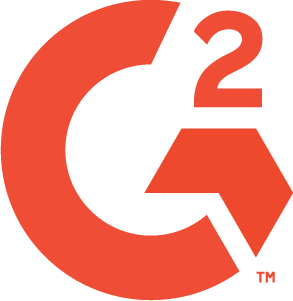 | ||
|---|---|---|
| 4.5 / 5 stars | 8 / 10 stars | 4.2 / 5 stars |
| 2,800+ total reviews | 400+ total reviews | 1,600+ total reviews |
Pipedrive has accumulated a solid score from thousands of reviews from certified sites, but it helps to know the stories behind these ratings. We’ve combed through large swaths of reviews to reveal the most common reasons why sales professionals like Pipedrive — plus reasons why they may prefer alternative CRM software.
Ease of use is a major selling point for Pipedrive — and a bulk of its positive reviews reflects this. Fans of Pipedrive appreciate how simple it is to set up and navigate; its tidy and intuitive graphic interface has enabled many sales professionals to better manage and track their pipelines stage-by-stage. And while it may be a lightweight platform in terms of native features, users say Pipedrive’s vast library of third-party app integrations more than makes up for that.
Pipedrive’s quality of customer support is inconsistent, per a selection of accounts. While plenty of users have sung its praises for being timely and thorough, several disgruntled customers reported that their poor experience with Pipedrive support tainted an otherwise positive experience with the software itself. From a functionality standpoint, criticism for Pipedrive largely centers around its lack of flexibility in reporting, customization, and automation.
Pipedrive is a fantastic option for small-to-medium companies that want a reasonably-priced CRM their sales team can use right out of the box. On the other hand, Pipedrive won’t appeal to larger organizations that are willing to pay a premium for complex sales and marketing features, richer reporting capabilities, and a vast array of customizable elements. Below are five CRMs we believe are the best Pipedrive alternatives:
Freshsales is our winning CRM with a focus on AI automation. Freddy AI forecasts revenue, scores leads, interacts with prospects, and much more. Freshsales is priced similarly to Pipedrive; however, Freshsales is a better choice for teams wanting deeper AI-powered tools, a robust built-in phone system, and a malleable platform that can be tailored to suit any industry. Freshsales’ free plan supports three free users; paid plans go up to $69 per user, per month.
Read our comprehensive Freshsales review to learn more about this CRM and decide whether this platform is the right option for your business.
Take a look at our list of the best Pipedrive alternatives for even more details regarding the costs, usability, and features of Pipedrive’s main competitors.
To accurately assess Pipedrive, we identified six main categories essential to businesses looking for a sales-centric CRM with affordable paid tiers, robust core features, and an intuitive user interface. For each category, we determined key weighted subcriteria and assigned an overall score out of five to know how Pipedrive performed across the six major categories.
We put most weight on Pipedrive’s pricing and core features, since these factors are important for businesses or sales teams looking for a strong yet cost-effective sales platform. We then proceeded to assess its ease of use and customer support, which users needing intuitive software are likely to consider. Lastly, we looked into its customization and advanced features.
We checked the CRM’s cost for its basic and enterprise plans for both annual and monthly pricing, free trial duration, add-ons, and free version (if available).
We looked into Pipedrive’s core CRM features, including contact management, sales pipelines, automation, and deal rotting.
Here, we combed through real user reviews from certified sites to know how the software fared in terms of ease of use and setup, as well as the depth of its knowledge base.
We considered the quality of customer service offered by Pipedrive via live chat, phone, email, and onboarding. We also evaluated user ratings and feedback on certified review sites.
This includes the platform’s capacity to customize features such as sales pipelines, deal stages and milestones, views, reports, and more. Plus, we looked into how well the software syncs with third-party applications.
We evaluated Pipedrive’s advanced feature offerings, such as lead scoring and routing, forecasting management, live chat, and advanced tools for project management, lead generation, and drip campaigns.
Pipedrive is a cloud-based CRM platform popular for its intuitive user interface and suite of robust sales tools for reps, teams, and businesses. Its key features include visual sales pipelines, contact management features, and a user-friendly platform that’s easy to set up and implement. Pipedrive also provides a la carte add-ons for document management, project management, lead generation, and email marketing campaigns.
Pipedrive is suitable for both small businesses and larger enterprises, thanks to its scalable features and customizable platform. However, small businesses might find Pipedrive more beneficial, especially for its easy-to-use platform and affordable pricing. Large enterprises that rely on more complex automation might find Pipedrive lacking, since its AI sales assistant might not be considered as robust as other CRMs’ such as Einstein GPT, Zia AI, and Freddy AI.
Pipedrive is famous for its sales-focused and visual interface, but it also lacks in different aspects. First, Pipedrive doesn’t have built-in marketing tools that businesses might need, and users need to purchase higher tiers or add-ons to launch campaigns. Pipedrive’s reporting is also not its strongest suit, so data-driven companies might consider looking into alternatives. Lastly, it has limited AI capabilities needed to create more complex workflow automations.
Over 100,000 people around the globe rely on Pipedrive to manage their deals and leads. Upon reading this review, you may either decide to add to that number or seek another option. No matter which action you choose, remember to do your due diligence first. To fully understand this CRM, read in-depth Pipedrive reviews (like this one), test the software for yourself via a free trial or demo, or see our list of the top CRMs for salespeople to learn more about other available options.
This article was written by Alison Barretta and updated by Kezia Jungco.


Alison is a Philadelphia-based technology writer for Selling Signals. She has 15 years of experience in the digital space, and her specialties include comparison guides and reviews across CRM, ecommerce, and various SaaS products. In her free time, Alison has received two HubSpot certifications plus a TEFL certification, as well as leads an online martial arts learning program.

Selling Signals delivers actionable advice for sales and marketing professionals. Learn strategies that help you hit targets, strengthen customer relationships, and win more business. Get expert advice on lead generation, sales processes, CRM software, sales management, and account management directly to your inbox.
Property of TechnologyAdvice. © 2025 TechnologyAdvice. All Rights Reserved
Advertiser Disclosure: Some of the products that appear on this site are from companies from which TechnologyAdvice receives compensation. This compensation may impact how and where products appear on this site including, for example, the order in which they appear. TechnologyAdvice does not include all companies or all types of products available in the marketplace.